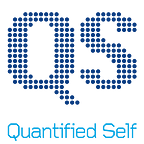We’re Trying to Improve Pacific Islander Health — So Why Work with Academics?
“We were at one in what we were trying to do, in terms of helping people. I said, let’s start tomorrow. She said no, I need a whole year. I said, ‘No, no — that’s too long, we don’t have a whole year!” — Siaosi Veimau
Health activists and researchers have been exploring ideas for working together that put the scientific professionals in a service role to community health leaders. It just makes sense: People are experts in their own lives, and people who dedicate themselves to improving the health of their communities have questions that need answers from researchers with powerful analytical methods.
In 2011 Siaosi Veimau and Coral Kenolio of Pacific Islander Community Health connected with Christina Holub from San Diego State University and the three of them decided to try to evaluate the effectiveness of culturally inspired exercise in the San Diego Native Hawaiian and Pacific Islander community. Our discussion of the barriers to collaboration was intense and revealing. Among the clear lessons: Institutional traditions that justify themselves with appeals to the best interests of research subjects often end up reinforcing the elitism and isolation of academic professionals, while denying communities access to research resources.
Highlights from Quantified Self Public Health 2016
Introduction to Quantified Self Public Health Symposium 2016
Announcing N-of-1: The Journal of the Quantified Self
Let’s Make Active Self-Tracking Much Easier With A One Touch Device
How I Use Self-Collected Data to Change the Power Dynamic in My Clinical Practice
At the Other End of Your Screen for Depression is a Real Person… Who May Suffer from Depression
We’re Not Waiting for Our Automatic Pancreas System
Frameworks for a New Field: Quantified Self Public Health
Learning About Collaboration in Community Science From from Youth Leaders in the Klamath Basin
We’re Trying to Improve Pacific Islander Health — So Why Work with Academics?
